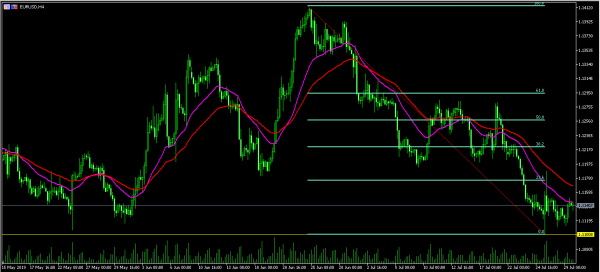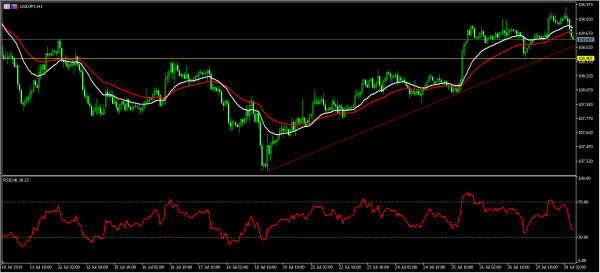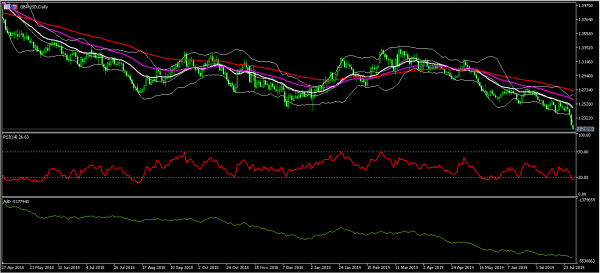Sterling continued the downward trend in the Asian session on growing fears that the UK is heading towards a no-deal Brexit from the EU. The currency is trading at the lowest level it has since March 2017, when the UK first triggered Article 50. Boris Johnson has rejected meeting with European leaders like Emmanuel Macron and Angela Merkel over the EU backstop issue. EU leaders have warned that the backstop issue cannot be negotiated. They have said that the deal they negotiated with Theresa May was the best one available.
The Japanese yen strengthened after the Bank of Japan delivered its interest rates decision. As expected, the central bank left interest rates unchanged at -0.1%. It also left its forward guidance unchanged. The bank said that it will keep very low interest rates levels for an extended period of time at least through spring 2020. On the yield curve control, the bank voted to purchase Japanese government bonds (JGBs) so that the 10-year JGP yields will remain around 0%. The bank added that it “will make these purchases in a flexible manner so that their amount outstanding will increase at a pace of about 80 trillion yen”. Meanwhile, data released before the rate decision showed that the unemployment rate dropped to 2.3% while the industrial production contracted by -3.6%.
Later today, the market will receive the German import price index. This is a measure of the average price of goods imported by the country. Investors expect the data to show a contraction of -0.2%. The French consumer spending is expected to grow by 0.2%. In Sweden, the statistics office will release the preliminary GDP growth for the second quarter. From the European Union, investors will receive business and consumer survey data from the European Commission. Germany will also release its CPI data. In the US, investors will receive the personal income and spending data.
GBP/USD
The GBP/USD pair declined sharply to a low of 1.2158, which is the lowest level since 2017. On the daily chart below, the pair’s price is along the lower line of the Bollinger Bands. The price is also below all the short and medium-term moving averages while the RSI has dropped to the oversold level of 26. The accumulation/distribution indicator too has continued to drop. The pair will likely continue to drop as investors wait for a clear direction on Brexit.
EUR/USD
The EUR/USD pair rose slightly in the Asian session ahead of key economic data from the European Union. The pair is now trading at 1.1141, which is slightly higher than yesterday’s low of 1.1100. On the hourly chart, the pair is along the 25-day moving average and lower than the 50-day EMA. The pair is also along the major support, after completing the cup section of the inverted cup and handle pattern. The pair will likely rise to test the 1.1175, which is the 23.6% Fibonacci Retracement level.
USD/JPY
The USD/JPY pair dropped to an intraday low of 108.63 after the BOJ delivered its interest rates decision. The price is now slightly below the 21-day and 42-day moving averages while the RSI has dropped sharply to the current low of 39. The price will likely continue moving lower, to test the important support level of 108.50.














